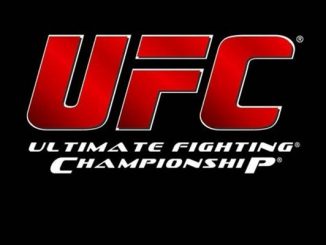
By Lance Rinker
As far as the Texas Rangers are concerned, it was thought to be a combination of hard work, perseverance, talent, and the right manager. All of that got them to back-to-back World Series in 2010 and 2011, losing the 2011 World Series in a manner befitting a team collapsing under the pressure at the last minute.
For those who had their memory wiped after that Game 7 against the St. Louis Cardinals, the Rangers were within one strike of winning their first World Series Championship in franchise history twice in Game 6.
Despite the letdown of losing consecutive World Series, the team and the fan base were still optimistic about the Rangers’ immediate future. Texas won the second wild-card spot in 2012, though it ultimately lost to the Baltimore Orioles 5-1 in the play-in game. That loss was especially heartbreaking because Yu Darvish was on the mound, facing a team in the Orioles that wasn’t considered to be nearly as good as the Rangers, and wound up thoroughly outplayed and outcoached.
I’m sure it was especially painful to watch considering on the mound for the Orioles was Joe Saunders, who had a career 9.38 earned run average at the Ballpark in Arlington leading into that game.
Fans remained optimistic heading into the 2013 season, and the Rangers didn’t completely disappoint as they won 91 games. However, they still missed the playoff due to having to claw their way to 91 wins in the final two weeks of the season, only to lose to the Tampa Bay Rays in a 163rd tiebreaker game for the final wild-card spot.
The 2013 season also was mired in public turmoil in the front office between former team chief executive officer Nolan Ryan and general manager Jon Daniels. Ryan stepped down and walked away from the Rangers that October and Daniels took over all responsibilities running the organization.
Injuries and ineptitude plagued the Rangers throughout the entire 2014 season after big moves were made the previous offseason to ensure another playoff run. Long-time manager Ron Washington resigned his position the day after the team was officially eliminated from playoff contention, citing personal reasons related to being unfaithful to his wife.
Fast-forward to the 2015 season and fans are semi-optimistic with a new manager in place, and expectations of a better season than the 95-loss atrocity that was 2014 despite a season-ending injury to the star pitcher in Darvish.
As is obvious, it takes a lot more work to sustain long-term success than it does to have a nice three- to four-year run. Unfortunately for the Rangers, that’s all it seems they were really built for at this point because other than the ingredients mentioned at the start, an organization also needs a stable and sane presence running it that matches up well with the scouting and development aspect of the organization.
When you look at an organization like the St. Louis Cardinals, who have had more wins than losses in 14 of their previous 15 seasons dating back to 2000, you see something built from the ground up. You see something that stresses the importance of developing its own talent pool while exercising logical restraint in free agency, only taking on players who fit in well with short- and long-term goals.
This has resulted in 11 playoffs appearances during their 15-year run, four World Series appearances and two World Series Championships.
Two other teams have also exhibited they know what it takes to win, even when they have to quickly rebuild teams, in the San Francisco Giants and Boston Red Sox.
The Giants have 10 winning seasons over their last 15, which include six trips to the postseason and three World Series Championships in four trips.
The Red Sox have 13 winning seasons over their last 15, which include seven trips to the postseason and three World Series Championships in three trips.
What sets those other two organizations apart from the Rangers?
Quite a bit, actually.
The Giants have an uncanny eye to recognize exactly what players can help them at the major league level without taking huge financial risks on them. They also have an ability to develop their own talent down on the farm and actually get something from them once they break through to the majors. The front office also isn’t afraid to retool, and do so effectively, when the team isn’t meeting expectations.
The other thing, probably the most important aspect that has helped lead the Giants to so much success, is stability in the front office and coaching staff.
The Red Sox have succeeded because of smart decisions when evaluating whether players they have fit into their clubhouse and with the culture of the organization. Sure, it helps to be able to spend about any amount of money you want on free agents, but the organization has taken a more relaxed and pointed approach to free agency in recent years and it’s helped.
Not to mention the organization’s ability to develop and nurture its own minor league talent to the point of helping at the big league level, or being able to trade them away for assets that help them immediately. Stability also is something the Red Sox have which is proven by how well the organization transitioned from one front office to the next along with the coaching staff.
More than anything, the Rangers have lacked stability at some level of the organization since their World Series runs and have yet to get it back. Success for some only emboldens them to bigger and better things, or more of the same. But for others, success can become a detriment because you no longer view things through an objective lens.




